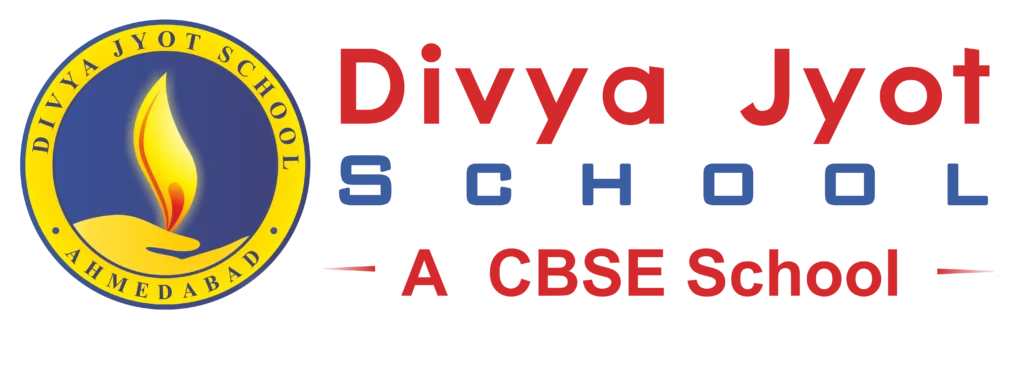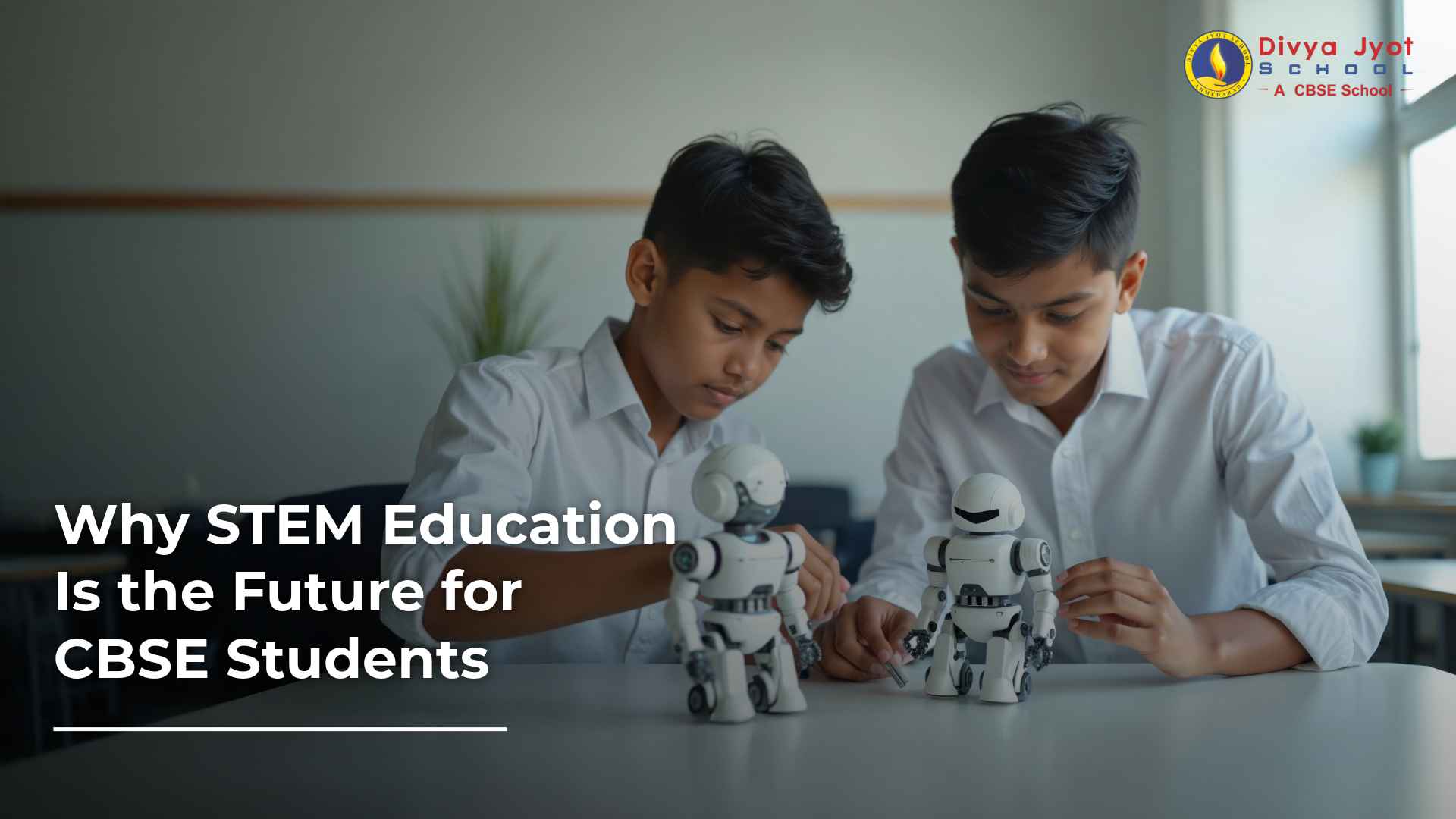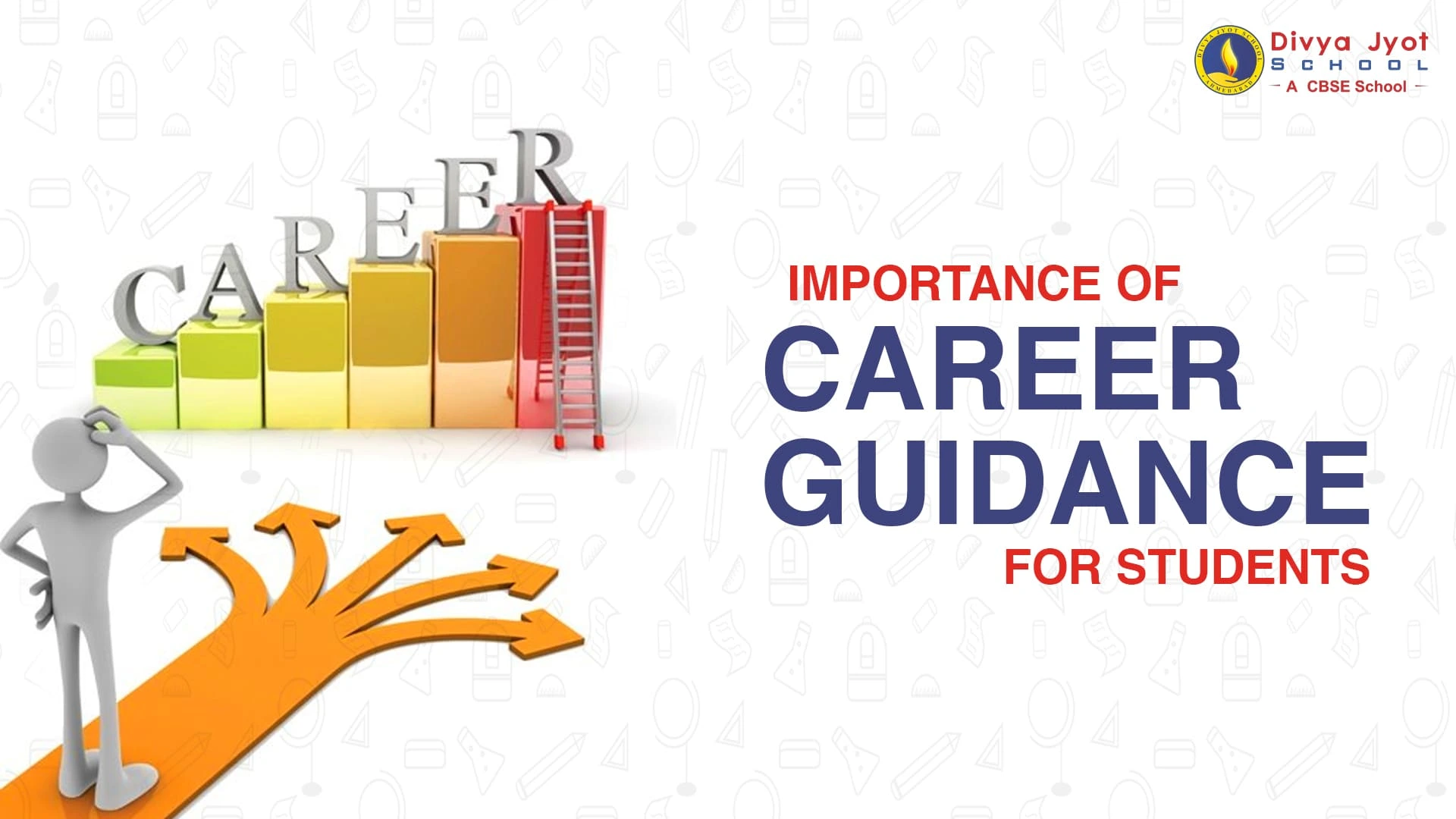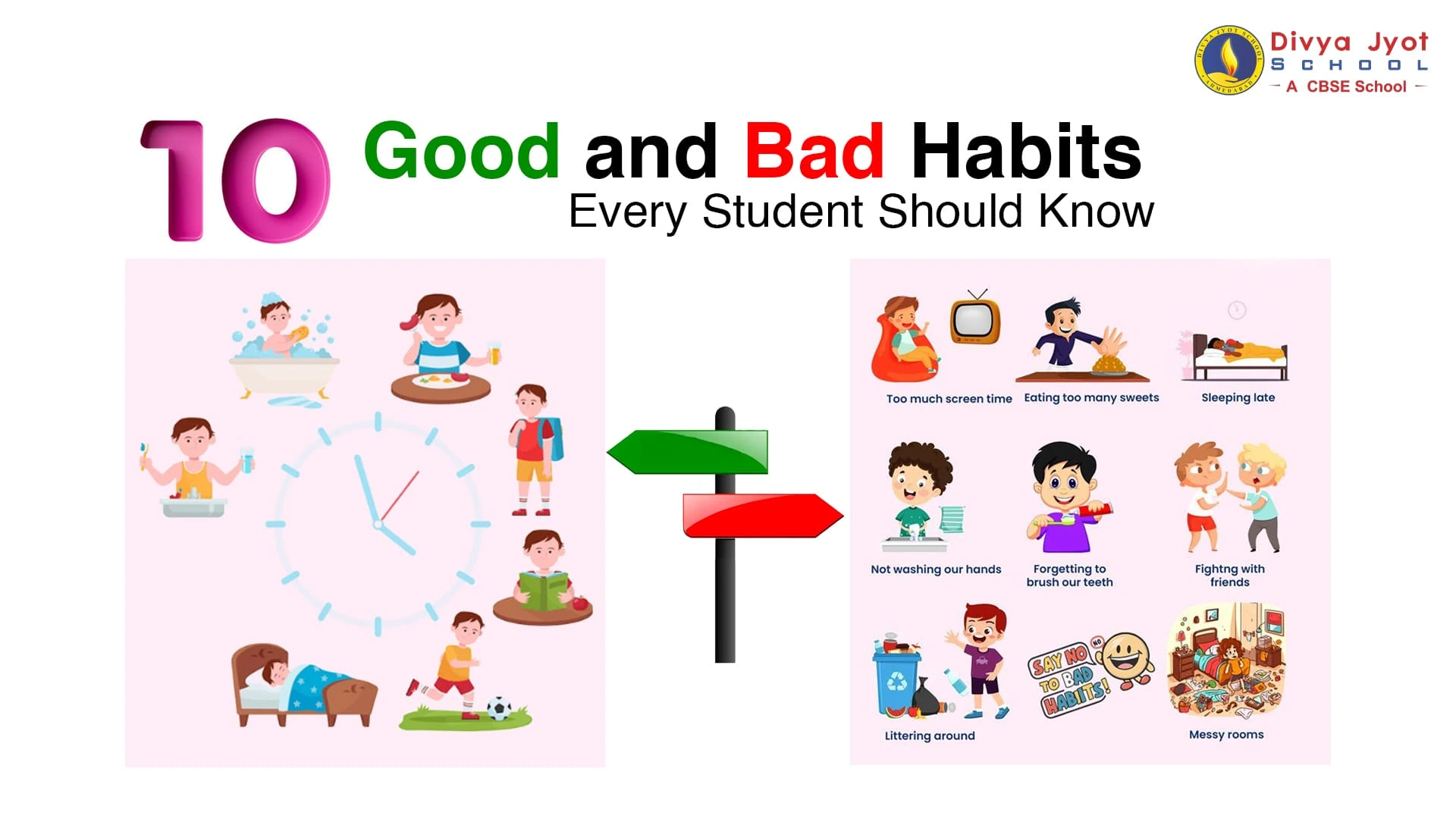Every parent wants to give their child the finest start in life possible, one that fosters self-assurance, curiosity, and achievement for the rest of their lives. We at Divya Jyot School think that learning is about more than simply textbooks and tests. It’s about shaping thinkers, creators, and problem-solvers who are ready for tomorrow.
Divya Jyot School blends academic excellence with practical learning, following the trusted CBSE curriculum. Our integrated STEM-based approach makes science, technology, engineering, and math engaging and hands-on, helping students apply what they learn in real-world situations. With a focus on analytical thinking, collaboration, and creativity, we’re preparing young minds to succeed in a fast-changing, technology-driven world.
What is STEM Education?
STEM education is a modern, interdisciplinary approach that blends Science, Technology, Engineering, and Mathematics into one cohesive learning experience. Instead of studying each subject separately, students learn how to apply concepts from all four areas to solve real-world problems creatively and logically.
For example, in a CBSE school, students might design a simple water filtration system as a STEM project. This task combines scientific knowledge of purification, engineering for building the model, math for accurate measurements, and technology to enhance the design. Such activities develop critical thinking, innovation, and practical skills that go beyond textbooks.
STEM education not only makes learning more interactive and engaging but also prepares students with future-ready skills needed in today’s fast-evolving world.
Key Benefits of STEM Education in CBSE Schools
STEM (Science, Technology, Engineering, and Mathematics) is more than just a curriculum—it’s a dynamic learning approach that equips students with real-world skills and future-focused thinking. When paired with the structured CBSE curriculum, STEM education transforms traditional learning into a meaningful and hands-on experience. Let’s examine the main advantages in more detail:
1. Encourages Creativity and Innovation
STEM is about examining many options, not simply finding the correct answer. Students are given the freedom to design, build, code, and experiment. Whether they’re creating a water filtration system, designing a smart city model, or coding a basic mobile app, they learn how to blend logic with imagination.
Students are able to view failure as a necessary component of learning in this exploratory setting. They become more confident in experimenting with new ideas and thinking creatively, which are crucial traits for future innovators and entrepreneurs.
2. Fosters Critical Thinking and Problem-Solving
STEM education teaches students how to approach challenges with logic and creativity. Instead of relying on rote memorization, learners are encouraged to understand concepts deeply, analyze situations, ask questions, and find solutions.
For example, when faced with a real-life task like building a working model of a wind turbine, students must evaluate materials, energy sources, and structural design. This practical application helps sharpen their problem-solving abilities—skills that are essential not only in academics but also in decision-making throughout life.
3. Makes Learning Fun and Engaging
Let’s face it—memorizing formulas or solving textbook problems can sometimes feel boring or disconnected from real life. This is altered by STEM education, which uses interactive, hands-on experiences to bring concepts to life.
Instead of just reading about scientific concepts, students get to perform experiments, build prototypes, or simulate real-life applications through technology. This experiential learning makes even the most complex topics easier to understand and far more enjoyable to learn.
4. Prepares Students for Future Careers
STEM education prepares students for the future, which belongs to those who are prepared for it. Today’s job market is driven by rapid advancements in technology. Careers in fields like data science, artificial intelligence, robotics, biotechnology, and renewable energy are expanding at an unprecedented pace.
By introducing STEM early in CBSE schools, students gain exposure to these subjects practically and engagingly. They begin to explore career paths that are high in demand and aligned with the needs of a technology-driven economy.
5. Builds Teamwork and Collaboration Skills
In the real world, most complex problems are solved through collaboration—and STEM education mirrors that reality. Many STEM projects in CBSE schools are designed to be group-based, encouraging students to work together, communicate effectively, and appreciate different viewpoints.
Students learn how to listen actively, contribute their strengths, and resolve conflicts—all while working toward a common goal. These interpersonal skills are not only important in academic success but are also highly valued in the professional world.
Conclusion
Beyond academic achievement, the goal at Divya Jyot School is to develop inquisitive minds and equip them with the proper mix of values, knowledge, and skills for the future. By integrating STEM learning into the trusted CBSE curriculum, students gain hands-on experience, real-world understanding, and a passion for discovery. If you’re looking to give your child an education that builds confidence, creativity, and future-readiness, choose Divya Jyot School—widely recognized as one of the Best CBSE schools in Ahmedabad.





